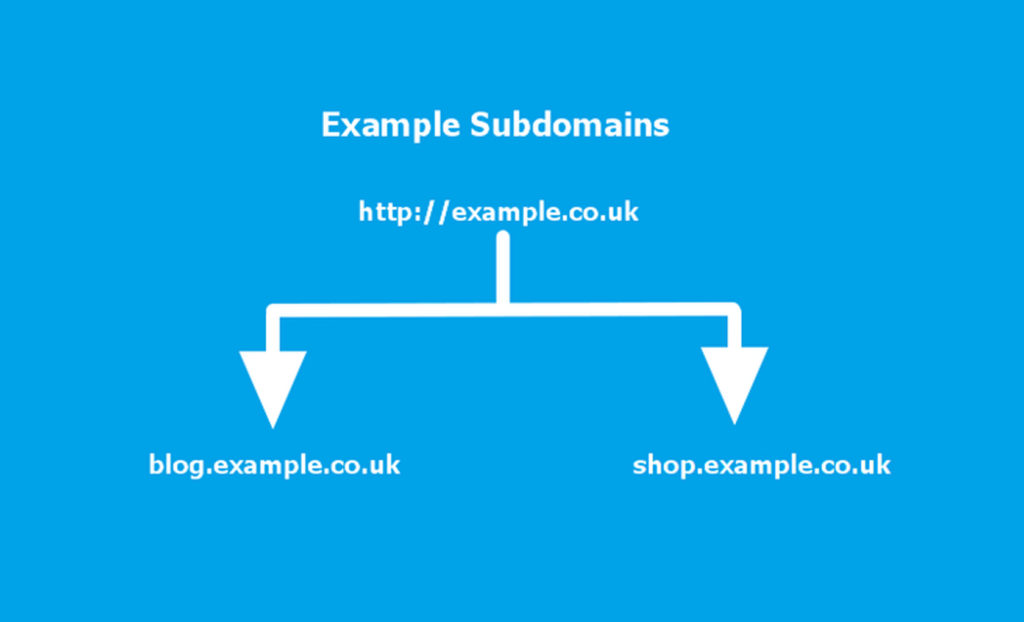Subdomains vs. Subfolders: Which One Is Best For Your SEO?

The choice between using subdomains or subfolders when it comes to adding SEO value has always been a much discussed topic in the field. There are many different opinions on this issue, even an official one given by Google themselves, but more anecdotal evidence has started to surface in the past few months, as some sites have tested moving their subdomain into a subfolder.
What are subdomains and subfolders?
First, let us explain what the two subjects of this article are.
A subdomain is an URL structure which originated from the root domain. If, for example, your website is https://example.co.uk, its subdomains could be:
- https://blog.example.co.uk
- https://shop.example.co.uk
And the most commonly seen: https://www.example.co.uk.

Thus far we’ve dealt with the definition of a subdomain, but what does a subdomain do for your SEO?
By definition, a subdomain holds content that’s completely different from your main domain into in its own separate place.
Again, if we look at the examples above, our site could be selling gardening products, while the blog.example.co.uk could hold all news related to the gardening world.
This separation is important, from an SEO point of view, because search engines look at subdomains as, more or less, independent ‘domains’ themselves.
This concept was introduced after a past flaw of the Google search algorithm was abused, as people were able to abuse exact-match and partial-match domain results, so that their site would be shown in the top 100 results.
Google didn’t like that one bit.
The one exception to the idea of separate content comes when employing International SEO, which allows us to use country codes as subdomains, such as: en.example.co.uk or fr.example.co.uk.
Following this, the employment of subdomains also requires more advanced Domain Name System (DNS) and web server configuration knowledge, so it is a less advisable option for those who aren’t familiar with it.
It is also important that whatever system is being used to publish the site allows for its flawless implementation.
Now let’s turn our attention to subfolders. Just as their counterpart, they originate from the root domain, but under a different format:
- https://example.co.uk/blog/
- https://example.co.uk/shop/

As they are held within the main root domain, search engines regard subfolders as part of the main site, independently of their content.
This allows the page value to be passed onto the main domain, keeping it all in one place without any risk of the subfolder leeching from the main domain.
Now that we’ve seen their definition, it’s time to see how subdomains and subfolders impact our search rankings.
So, are subdomains or subfolders better for SEO?
As seen from Matt Cutt’s video, in theory it shouldn’t make a difference which technique you use to present content on your website, since modern search algorithms are much more intelligent and can realise that, if subdomains are used, this content isn’t separate.
Unfortunately this isn’t quite true. In January an article published by Timo Reitnauer showed how he tried to transition his blog from a subfolder onto a subdomain.
Following this action, his page views plummeted and, even after 6 months, still haven’t recovered.
A move of such magnitude requires different SEO actions that could go wrong such as properly 301-redirecting the old URLs in the new blog. Even though the site did this, it still was negatively affected by switching over to the subdomain for their blog.
Moz also published a WBF article on February 6th in which they stated that subfolders are preferred over subdomains, as they also tested moving their SEO 101 guide from one to the former and noticed a marked improvement in a very short time.
Further proof, to support Moz’s point of view, was posted on twitter by John Doherty about his own site’s improvements for implementing the same strategy.
All of the above raises the question if Google doesn’t want to discern the content held in subdomains and whether they attribute their rank value to their root domains or not.
It’s also unknown if the transition was well-handled from an SEO point of view.
More in-depth testing would be required to find true causality between using subdomains or subfolders and page value increase.
Final Verdict: Which One Should We Use For SEO Purposes?
Given the evidence seen throughout the research of this article it would seem that subfolders have a greater positive impact than subdomains on page value and search rankings.
Not only are subdomains harder to implement for the average user, but switching over from subfolder to subdomain seems to drastically damage you page views and rankings.
Unfortunately, we don’t actually know the full extent of the algorithm’s behaviour and only thorough experiments will we be able to significantly correlate a cause and effect.
Until then, it’s up to the reader to make an informed choice.
Own your marketing data & simplify your tech stack.
Have you read?
Chrome’s announcement on dropping cookie opt-in last month closed the door on a 5 year saga for marketers. But what is the landscape like in 2025 for cookie-based measurement?
Generative AI is transforming the way that marketers plan and assemble content for their Paid Ads. As big platforms like Google, Meta and TikTok increasingly build the tools needed to...
In a surprising move that has sparked heated debate, Mark Zuckerberg announced on his Instagram that Meta will be reducing its levels of censorship and in particular fact-checking on its...



